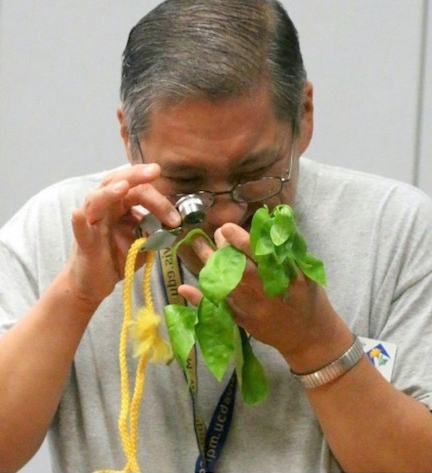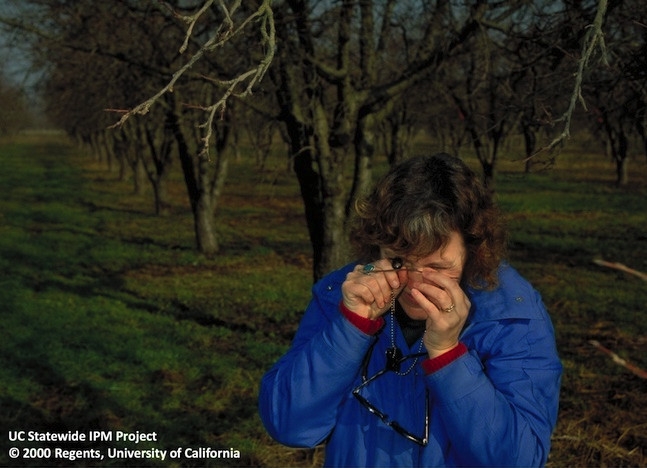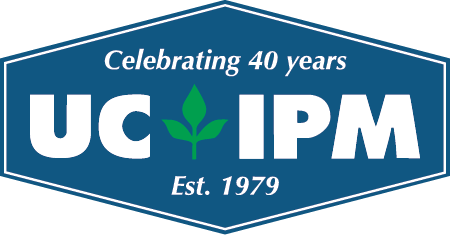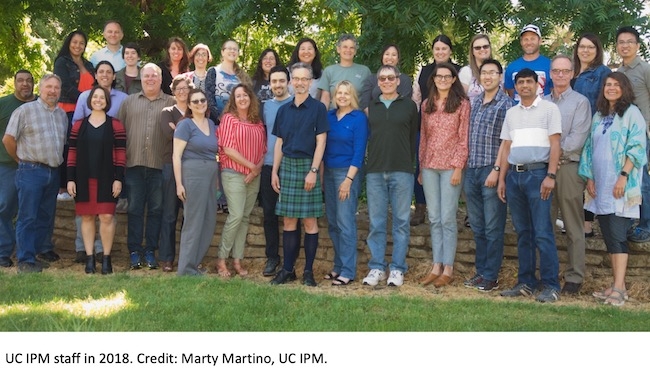The University of California Statewide Integrated Pest Management Program (UC IPM) is celebrating its 40th anniversary. Established July 1, 1979, with funding from the California Legislature, UC IPM built upon a growing movement to reduce dependence on pesticides. Drawing on expertise across the University of California system, UC IPM develops and distributes UC's best information on managing pests using safe and effective practices that protect people and the environment.
Over the years, UC IPM expanded its efforts beyond agriculture to include residential audiences such as schools, landscape and structural professionals, and public health agencies; public agencies; and natural resource managers. UC IPM works through Cooperative Extension to deliver information to clientele in every California county.
Since its inception, UC IPM delivered science-based integrated pest management (IPM) information. There's no plan to change this, but it's exciting to think about the next 40 years. Improvements in technology have changed how people learn and who they get information from. UC IPM's website and online tools need to grow and change as our users change the way they like to get information. And some of these changes will be mandatory as our funding sources have changed as well.
Some things haven't changed like the IPM advisors and affiliated advisors solving problems and providing local, practical, trusted pest management information. Over the last 40 years, pest management successes happened in both agriculture and communities.
- UC IPM and Cooperative Extension advisors joined a multi-government and grape industry team to develop and extend a low-impact pest management program for European grapevine moth and conduct research to inform regulatory policy. In 2016, European grapevine moth was declared eradicated.
- UC IPM and the UC Master Gardener Program are key partners in assisting the general public with pest issues around the home and garden. UC IPM trains more than 600 UC Master Gardener volunteers each year on topics ranging from pest identification to understanding home-use pesticides.
- UC IPM partnered with stormwater agencies and state regulators to train IPM Advocates. IPM Advocates work as consultants to help retail stores provide information about less toxic products and the safe use of pesticides. Surveys after the IPM Advocates program indicated that 76% of participating stores used the UC IPM website for identifying pests or solving problems, more than 70% increased shelf space for green or less-toxic pest management products, and more than 76% increased sales of green products.
- UCIPMandCooperativeExtensionadvisors worked together with commodity boards and the United States Department of Agriculture (USDA) to develop a successful mating disruption program to prevent codling moth damage in pears without pesticides. In 2009, 95% of California pear acreage used pheromone mating disruption, eliminating the need for codling moth pesticide sprays.
UC IPM has dedicated program staff at the UC Agriculture and Natural Resources (ANR) headquarters in Davis. The staff provides IPM leadership, training, content development, and is the magical information technology (IT) presence behind UC IPM's website and online tools. UC IPM is also the home of the Pesticide Safety and Education Program (PSEP) in California, which trains pesticide safety trainers to teach pesticide applicators, pesticide handlers, and fieldworkers safe practices.
UC IPM will continue conducting research to solve important pest problems, extending IPM programs to practitioners, providing training, and developing outreach material. Over UC IPM's next 40 years, be on the lookout for changes for the better. Changes that engage users by using new technology, adapt UC IPM's existing knowledge into easy to use decision-making tools, and facilitate the development of new products—products that Californians seeking pest solutions can use to safely and effectively solve their pest problems.



